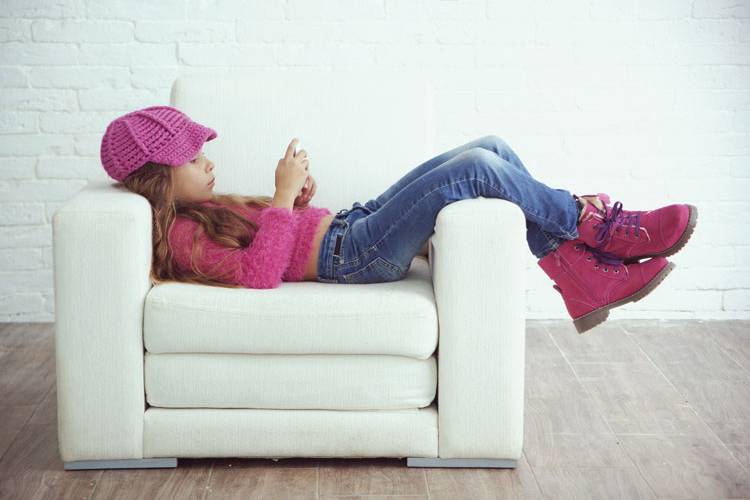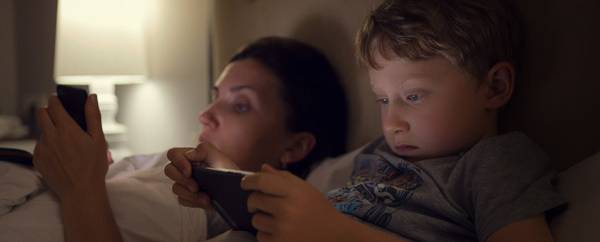Finding the balance between the online and offline world
New technologies are an important part of children’s development and have become essential tools in our everyday, work, school and social lives and leisure time. New generations have immediate access to a large amount of information, applications and games. But when is the right time to let children access mobile phones or tablets? How can we combine the online and offline world?
child care
Share

It is difficult to establish age limits for your child to have a mobile, to play with yours, to have a tablet or use your laptop, as it depends on their maturity, environment and other circumstances. An inappropriate use of new technologies, such as spending a lot of time on a mobile or accessing age-inappropriate Internet content, may be have a negative effect on their attitude, affecting both the school and home environment. For this reason, prevention is better than cure.
RESPONSIBLE USE OF THE DIGITAL WORLD
The great worry of parents is guiding their young children in the responsible use of the digital world, being aware that when they reach adolescence they will plunge into social networks and information and communication technologies (ICTs). This is what stands out from the study ‘Young children (0-8) and digital technology’, carried out by the Autonomous University of Madrid, in collaboration with researchers from the Autonomous University of Barcelona and coordinated by the EU Joint Research Centre in 19 neighbouring countries.
The majority of parents wonder what they can do now, when their children are 6, 7 or 8 years old, to guide them in practices which will influence their later years, so that in their teenage years they use digital devices appropriately.

‘THEY ARE NOT THAT ADDICTED’
From 6 to 8 years, children use new technologies for leisure, fun and entertainment. And despite the myth that they are addicted to them, the study reveals the complete opposite. ICTs are not among the first preferences of youngsters. They prefer to play with their friends or with toys in their room.
Children access the Internet to research information either for schoolwork or on a topic that interests them (magic games, cooking, pets...). The channel they most use is YouTube.
Tablets are Spanish children’s favourite digital tool, according to the study. There are many reasons for this: because of its size, larger than a mobile phone; for its convenience, which enables them to use it anywhere; because they are easy to handle and because they can download a large variety of apps and even watch films and cartoons. They hardly use the computer and mobile phone when they are little.
Despite the myth that small children are addicted tonew technologies, a study shows that they prefer playing with friends.
The excessive use of devices with screens (computers, tablets, phones, etc.) by children, according to some studies, may produce an attention deficit, sleep disorders, hyperactivity, aggressiveness, reduced academic performance and difficulties in language and vocabulary development. This is why parents must work on combining the technological and virtual world and the real one, which requires physical, visual and interpersonal contact, and promoting a balance between both.
BENEFITS OF HUGGING
Physical contact and above all, hugs, are health beneficial. According to a study by the Duke University in the United States, which analysed the effect of a lack of physical contact on babies, concluded that it can contribute to the death of neurones and a deficiency in the growth hormone production, resulting in what is known as “psychosocial dwarfism”. Also, recent research reveals that the brain of a child which does not receive affection is approximately 20% smaller.
Reasons to hug:
• You feel good, thanks to the production of oxytocin, known as the hug or love hormone, which promotes feelings of trust and union.
• Essential in childhood, because caresses and hugs are healthy for people thanks to the emotional attachment factor.
• It relieves fear, because hugs reduce worrying and help us to calm down, providing us with comfort and tranquillity.
• It strengthens the body, because when we hug we feel supported and loved.
• It reduces blood pressure, because when we are touched, sensory receptors in the skin called ‘Pacinian corpuscles’ are activated which send signals to the vagus nerve, located in a part of the brain responsible for reducing blood pressure.
• It reduces stress, because hugging, kissing and physical contact increase oxytocin levels, which reduce anxiety.

On the Internet: if you don’t disconnect, they won’t either
Guidelines to start your children in the new technologies
On the Internet: if you don’t disconnect, they won’t either






